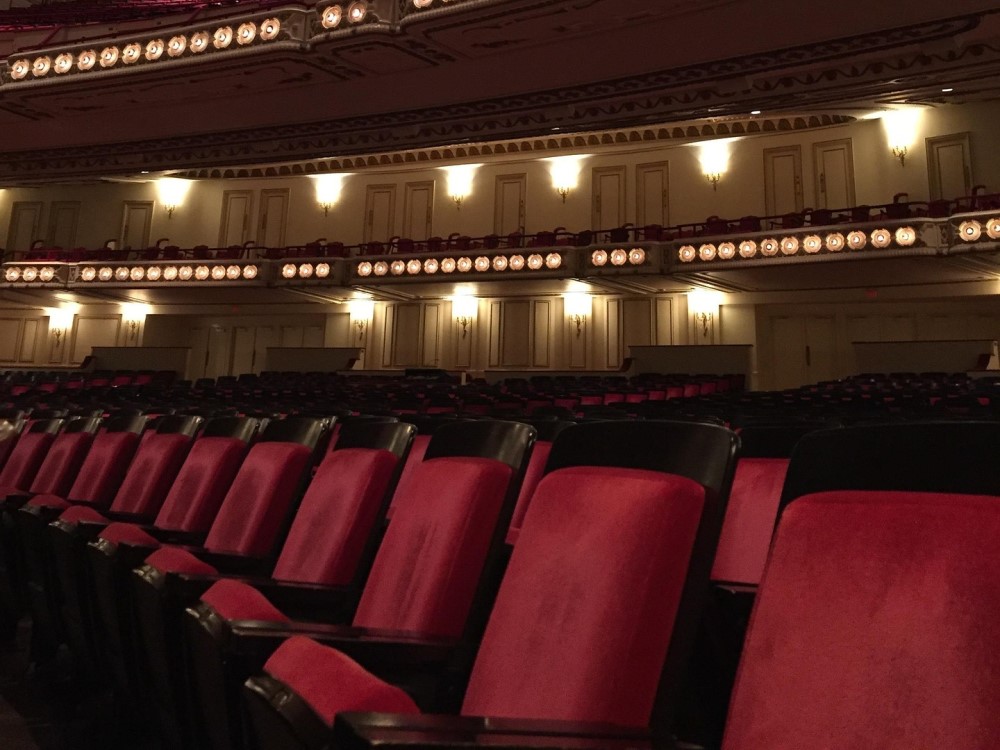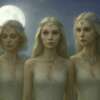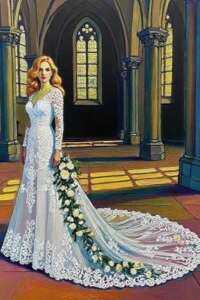Classical LGBT theatre: A Brief History and Analysis
Going out By Oddplanet on Fri, Dec 30th, 2022 @ 11:36:46 AM 85 0
Theatre has always been a medium of expression, exploration, and representation for various aspects of human experience, including sexuality and gender identity. Throughout history, there have been many examples of theatre that have featured or implied LGBT themes, characters, or performers, either openly or covertly. In this blog post, I will provide a brief overview[READ MORE]

Theatre has always been a medium of expression, exploration, and representation for various aspects of human experience, including sexuality and gender identity. Throughout history, there have been many examples of theatre that have featured or implied LGBT themes, characters, or performers, either openly or covertly. In this blog post, I will provide a brief overview of some of the most notable and influential examples of classical LGBT theatre, from ancient Greece to the 19th century.
Ancient Greece: The Birthplace of Theatre and Homoeroticism
Ancient Greece is widely regarded as the birthplace of Western theatre, as well as the origin of many forms of art, literature, philosophy, and science. It is also known for its culture of homoeroticism, especially among men. Although homosexuality was not a fixed or defined identity in ancient Greece, it was a common and accepted practice, especially in the context of education, military, and politics. Many prominent figures in Greek history and mythology, such as Socrates, Plato, Alexander the Great, Achilles, and Patroclus, were involved in same-sex relationships or expressed homoerotic sentiments.
Classical LGBT theatre in ancient Greece was closely linked to religion, politics, and social life. It was mainly performed in festivals dedicated to the god Dionysus, the patron of wine, fertility, and ecstasy. The genres of tragedy and comedy emerged from these festivals, as well as the concepts of drama, plot, character, dialogue, chorus, and spectacle. Theatre was also a way of exploring and commenting on various aspects of human nature and society, such as morality, justice, love, war, power, and gender.
Many plays from ancient Greece contain references or hints to LGBT themes or characters. For example:
– The Bacchae by Euripides: This tragedy tells the story of the god Dionysus and his cult of female followers (the bacchants), who are persecuted by the king Pentheus for their unconventional worship. The play explores the themes of madness, ecstasy, gender fluidity, and transgression. Dionysus is often depicted as an androgynous or feminine figure who seduces both men and women. He also disguises himself as a woman to infiltrate Pentheus’ palace and lures him into dressing as a woman to spy on the bacchants. Pentheus is eventually torn apart by his own mother Agave, who mistakes him for a lion under Dionysus’ influence.
– Lysistrata by Aristophanes: This comedy depicts the women of Athens and Sparta who decide to withhold sex from their husbands until they end the Peloponnesian War. The play is full of sexual innuendos and jokes, as well as political satire and social commentary. One of the subplots involves a group of old men who try to seduce a group of young men who guard the Acropolis where the women have barricaded themselves. The play also suggests that some of the women may have lesbian relationships with each other during their sex strike.
– Symposium by Plato: This is not a play but a philosophical dialogue that features a series of speeches on the nature and origin of love (eros). The dialogue takes place at a banquet attended by various intellectuals and artists, including Socrates and Aristophanes. Most of the speeches focus on the love between men (pederasty), which was considered superior to the love between men and women. One of the most famous speeches is given by Aristophanes, who tells a myth about how humans were originally double beings with four arms, four legs, and two faces. They were either male-male, female-female, or male-female pairs. However, they became arrogant and tried to challenge the gods, who split them in half as a punishment. Since then, humans have been searching for their lost halves to complete themselves. Aristophanes claims that this is the origin of sexual attraction and orientation.
Renaissance Europe: The Revival of Theatre and Humanism
The Renaissance was a period of cultural rebirth that spanned from the 14th to the 17th century in Europe. It was characterized by a revival of interest in classical art, literature, and philosophy, as well as an emphasis on humanism, individualism, and creativity.
Theatre was one of the most popular and influential forms of art during this period, as it reflected and shaped the social, political, and religious changes that occurred. Theatre also became more diverse and innovative, as new genres, styles, and techniques emerged.
LGBT themes and characters were also present and explored in many plays from this period, although they were often hidden or coded due to censorship and persecution.
Some examples of classical LGBT theatre are:
– Romeo and Juliet by William Shakespeare: This tragedy tells the story of two young lovers who belong to rival families in Verona. The play is widely regarded as one of the greatest love stories ever written, but it also contains some hints of homoeroticism. For instance, Romeo’s close friendship with Mercutio, who is often portrayed as flamboyant and witty, may suggest a latent attraction or affection between them. Mercutio also mocks Romeo’s love for Rosaline, a woman who does not reciprocate his feelings, by using sexual puns and metaphors. Moreover,
Juliet’s nurse refers to Romeo as a “pretty piece of flesh”, which implies that he is attractive to both men and women.
– Edward II by Christopher Marlowe: This history play depicts the reign and downfall of King Edward II of England, who was notorious for his favoritism and love for his male courtier Piers Gaveston. The play portrays Edward and Gaveston’s relationship as passionate and romantic, but also as destructive and tragic. Edward’s neglect of his duties and his wife Isabella, as well as his defiance of the nobles and the church, lead to his eventual deposition and murder. The play also features other LGBT characters, such as the bisexual Earl of Cornwall, who betrays Edward for Isabella, and the lesbian Queen of France, who falls in love with Isabella.
– La Celestina by Fernando de Rojas: This tragicomedy tells the story of Calisto and Melibea, two young lovers who are aided by a procuress named Celestina. The play is considered one of the first examples of Spanish literature, as well as one of the precursors of the novel. The play explores the themes of love, lust, deception, greed, and death. It also contains several LGBT characters, such as Celestina herself, who is a former prostitute and a witch who practices lesbian magic. She also employs two male servants, Parmeno and Sempronio, who are implied to have a sexual relationship with each other. Additionally, one of the subplots involves a young man named Areusa, who is in love with Calisto, but is rejected by him.
The 18th and 19th Centuries: The Rise of Romanticism and Realism
The 18th and 19th centuries were marked by significant social, political, and cultural transformations in Europe and America. The Enlightenment, the Industrial Revolution, the French Revolution, the American Revolution, and the Napoleonic Wars were some of the events that shaped this period. Theatre also underwent major changes, as new movements such as romanticism and realism emerged. Romanticism was a reaction to the rationalism and classicism of the Enlightenment. It emphasized emotion, imagination, individuality, and nature. Realism was a response to the social problems and conflicts caused by industrialization and urbanization. It focused on depicting the reality of everyday life, especially for the lower classes.
LGBT themes and characters continued to be present and explored in theatre during this period, although they were still subject to censorship and repression.
Some examples are:
– The Importance of Being Earnest by Oscar Wilde: This comedy of manners satirizes the hypocrisy and triviality of Victorian society. It revolves around two young men, Jack and Algernon, who pretend to be someone else to escape their social obligations and pursue their romantic interests. The play is full of witty dialogue, absurd situations, and double entendres. It also contains some subtle references to homosexuality, which reflect Wilde’s own sexuality and experience. For example, the title itself is a pun on the name Ernest, which was a common code name for gay men in Victorian England. The play also hints at Jack and Algernon’s attraction to each other,
as well as their involvement with other men.
– A Doll’s House by Henrik Ibsen: This drama exposes the oppression and inequality faced by women in 19th century Norway. It centers on Nora Helmer, a seemingly happy and obedient wife who secretly borrows money from a shady lender to save her husband’s life. However, when her secret is exposed, she realizes that her marriage is based on lies and manipulation. She decides to leave her husband and children to find her own identity and freedom. The play also features a minor character named Dr. Rank, who is a close friend of Nora and her husband Torvald. Dr. Rank is implied to be gay, as he confesses his love for Nora but does not expect anything from her. He also suffers from a terminal illness that he inherited from his father, who was a notorious womanizer. This suggests that Dr. Rank’s homosexuality is a result of his father’s sins and a punishment from God.
– Spring Awakening by Frank Wedekind: This expressionist play depicts the sexual awakening and frustration of a group of teenagers in late 19th century Germany. The play deals with topics such as masturbation, homosexuality,
abortion, rape, suicide, and child abuse. It also criticizes the repressive and hypocritical attitudes of society










Leave a Reply